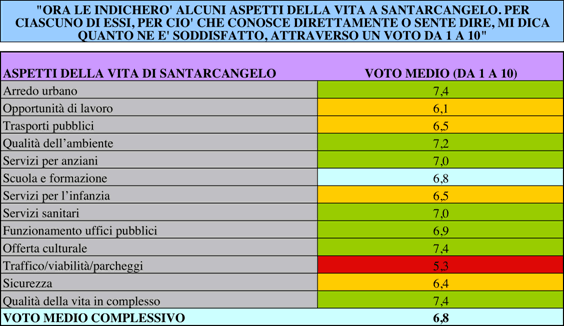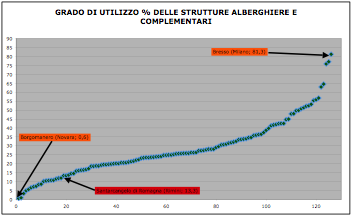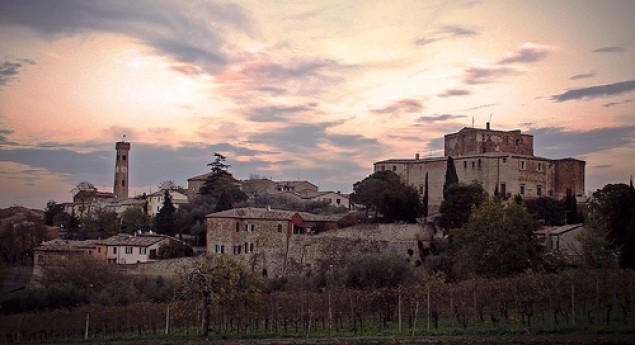Analysis of relative positioning, and urban marketing for the city of Santarcangelo di Romagna
Year: anni 2007-2008
In 2007, the City of Santarcangelo di Romagna initiated through the procedures of Agenda 21 its revised Structure Plan.
The Administration has sought to assist the Plan to a study that was able to provide precise information about the relative positioning of Santarcangelo compared to a sample of important cities of similar size in the central north.
The tools that could provide a useful contribution to the socio-economic position of Santarcangelo were of various kinds and of various kinds, but each of them was characterized by responding to specific needs.
The questions we sought to answer were in particular the following:
- It 'was solicited the opinion of entrepreneurs on its activities. How to switch from the internal perception of the business life cycle to a thermometer of the overall state of the local economy?
- To be in a marketing perspective of the territory also means listening to the citizens to verify their needs, their attitudes and behaviors, and convey to the business community input collected. How to proceed listening to the citizens?
- The City of Santarcangelo must be placed in a wider territorial framework, in order to better appreciate the peculiarities and characteristics, what are the areas that could provide a reference in this regard?
- In Italy are developing innovative practices in land management, despite the economic crisis, and despite the cuts in transfers to local governments. There are some practices that could be interesting for Santarcangelo?
Some intervention tools used to answer:
A. A survey of behaviors and attitudes of families living in Santarcangelo helped collect the scenario elements not otherwise available, and evaluate the degree of satisfaction on a number of important issues for the policies of the territory. In this regard, a sample survey was carried out on residents, interviewing about 400 households.
B. Santarcangelo unable to place in a scenario more complex socio-economic, build a thermometer, or a "monitoring dashboard", the overall state of local socio-economic, involved the implementation of a benchmarking exercise that would gather a significant number of objective indicators, sources officers or in the field, and so that would put the country in comparison with others on a rich and complex series of gauges. The construction of a "monitoring dashboard" represented a further output of the work, which was, however, take into account what had already been done on the topic. In particular, the University of Bologna, Rimini, held through its Faculty of Statistics research on behalf of the local newspaper "The Voice," which was published at the beginning of each year. The survey was based on two key areas:
- consider the territory of the provinces of Romagna (and Montefeltro in the 2006 edition), thus emphasizing the spatial proximity of local government;
- synthesize in a ranking five blocks of indicators for the assessment areas standard of living, entrepreneurship, public services, socio demographic Culture sports and leisure, taking as reference the period 2003/2006 according to data availability.
Has set itself the question, therefore develop a "frame" that could be complementary analytical with what has already been produced in surveys like the one quoted.
The chosen path was to privilege the population size of the municipalities, regardless of their contiguity. We therefore proceeded to select 136 municipalities in the north central (the regions are taken into account Valle d'Aosta, Piedmont, Lombardy, Trentino Alto Adige, Veneto, Friuli Venezia Giulia, Liguria, Emilia Romagna, Tuscany, Umbria, Marche) that placed are between 18 thousand and 30 thousand residents.
The 136 municipalities selected were then being compared on a "basket" of key indicators, which have aimed to shed light on the relative positioning of Santarcangelo;
C. The collection and processing, through official sources and through direct contacts with the government, some of the best practices and most innovative projects implemented in Italy for the development of the territory, has provided interesting stresses and stimuli at the local level, which have been subject of a special profiling;
D. The various cognitive tools have been made available to the Administration finally to contribute to the Municipal Economic Conference and to provide input to the next program
As regards point b), the monitoring dashboard (among other things periodically updated, being largely based on official sources, with the exception of parameters specifically designed and developed to work) for example, was composed by the following set of indicators :
1. trends of the resident population 1991/2005 (ISTAT);
2. Level of income and consumption (2007 data econometric model sync);
3. number and density of branches (data Bankitalia 2003);
4. amount of bank deposits (Based on data from Bank of Italy);
5. number of cars in circulation (ACI 2003);
6. % Of cars above 2,000 cc. (ACI 2003);
7. Outflows, expressed by the daily commute to work or study purposes (ISTAT census data);
8. Level of education (incidence graduates, ISTAT census data);
9. Level and trend of outsourcing of the local economy (census data ISTAT);
10. Level of tourist infrastructure (ISTAT 2002)

THE CLASSIFICATION OF URBAN DIMENSION
EXCELLENCE:
FURNITURE: 7.4
CULTURAL OFFER: 7.4
QUALITY 'OF LIFE IN THE COMPLEX: 7.4
CHARACTERISTIC ASPECTS:
QUALITY 'ENVIRONMENT: 7.2
SERVICES FOR THE ELDERLY: 7.0
HEALTH SERVICES: 7.0
OPERATION OF PUBLIC OFFICES: 6.9
THE NORMAL APPEARANCE (EQUAL TO THE INTERNAL MEDIA):
SCHOOL AND TRAINING: 6.8
ISSUES BUT NOT SUFFICIENT CHARACTERISTIC:
PUBLIC TRANSPORTATION: 6.5
SERVICES FOR CHILDREN: 6.5
SAFETY: 6.4
OPPORTUNITY 'TO WORK: 6.1
THE PROBLEMATIC ASPECT:
TRAFFIC / ROAD '/ PARKING 5.3
An example of output for the benchmarking

In conclusion has been drawn up on the basis of the information collected a repertoire of 15 strategic interventions aimed at the revitalization of the short, medium and long term of the municipal territory.



